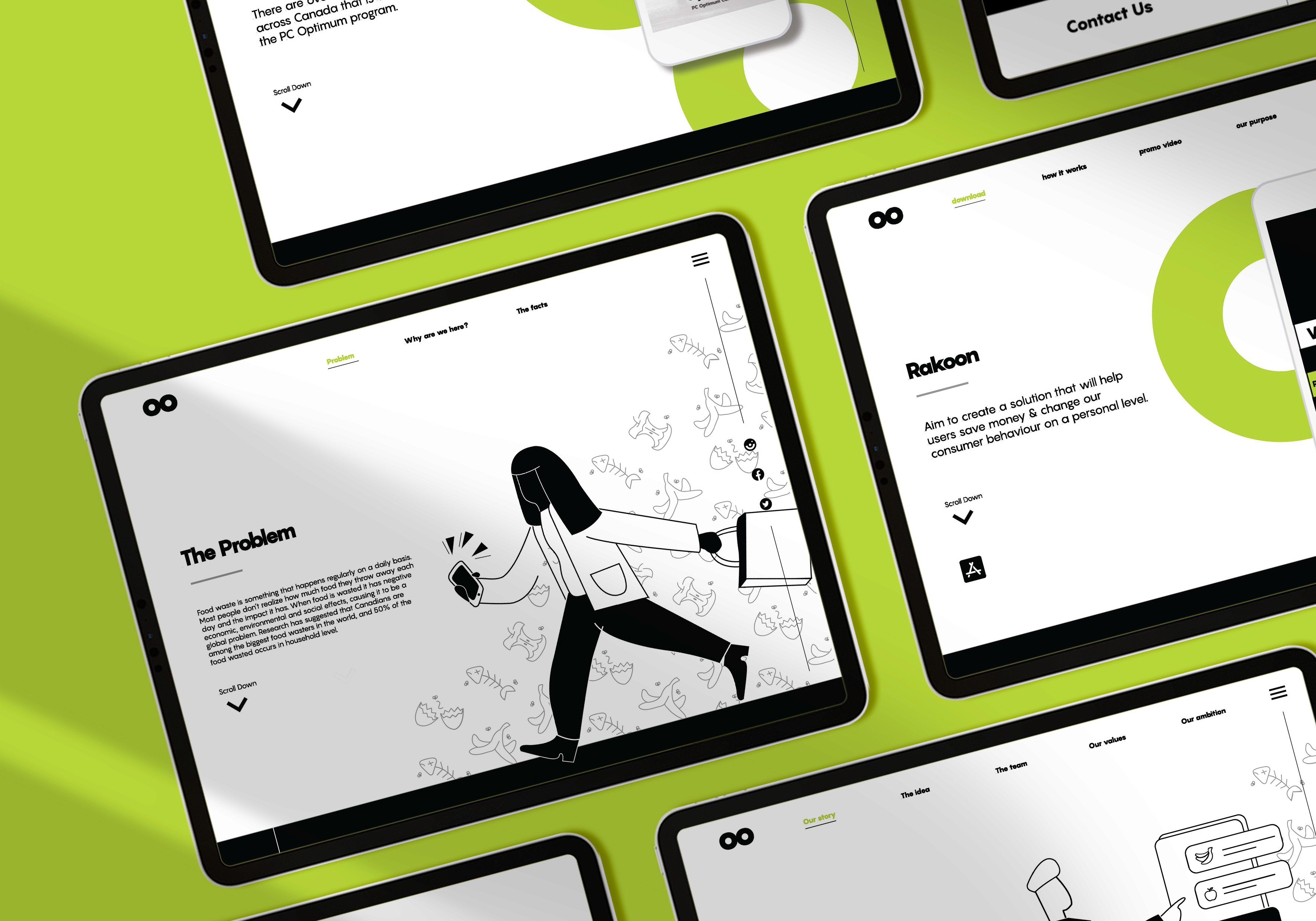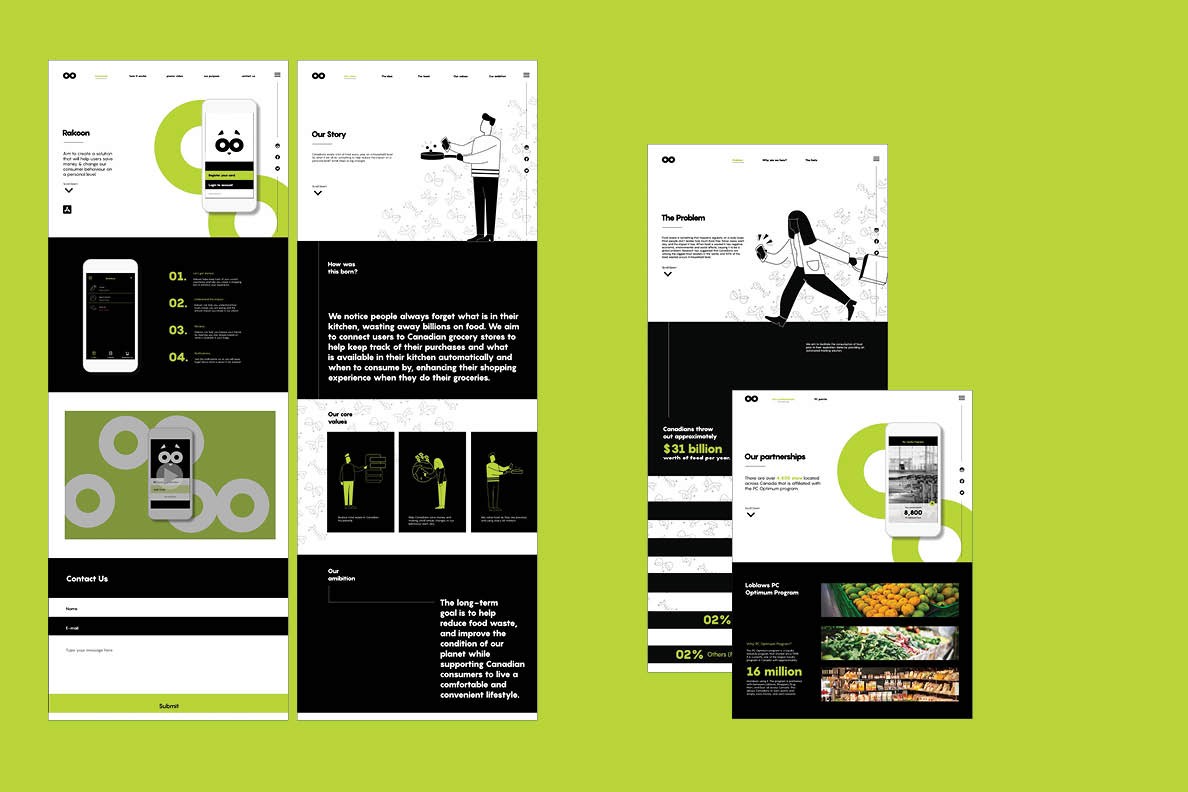
Engage our audiences

The website is our social media to community with the target audience in North American. People can do research on it to learn more prior to downloading and using the application. Future stakeholders can also learn more about the core values of the app if they are interested in the program.

How does it work?
Prototyping an mobile app that fits into our convenient and comfortable lifestyle but also designed to help reduce food waste in household, helping target audience achieve their
long-term goals.
Wireframes were designed based on the research and Information Architecture (IA) that was developed to help identify what information is needed by the user in a particular context.
After doing a lo-fi wireframe, I’ve implemented colour and high quality images into the prototype . The prototypes were created on Figma, which is a cloud-based design tool similar to Sketch for easier prototyping and collaboration.

How might we use design to educate and encourage Canadians to change their consumer behaviours and reduce food waste at household level?
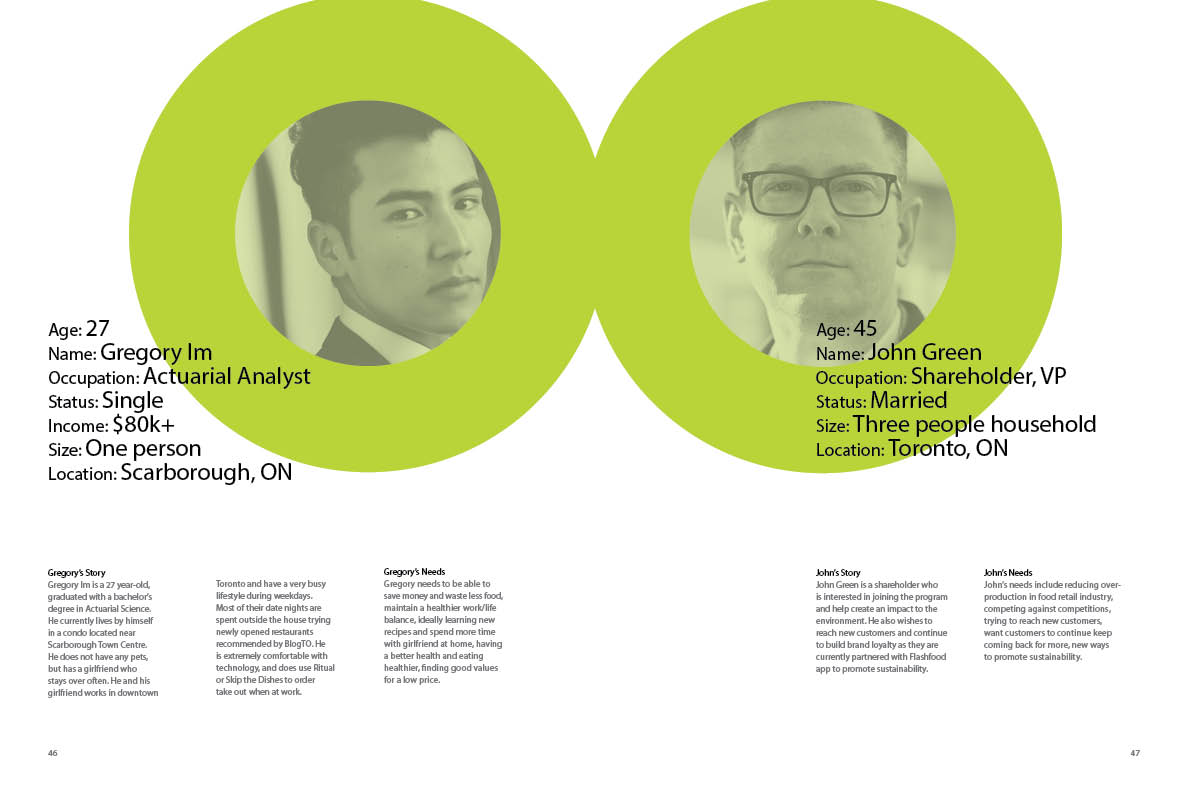
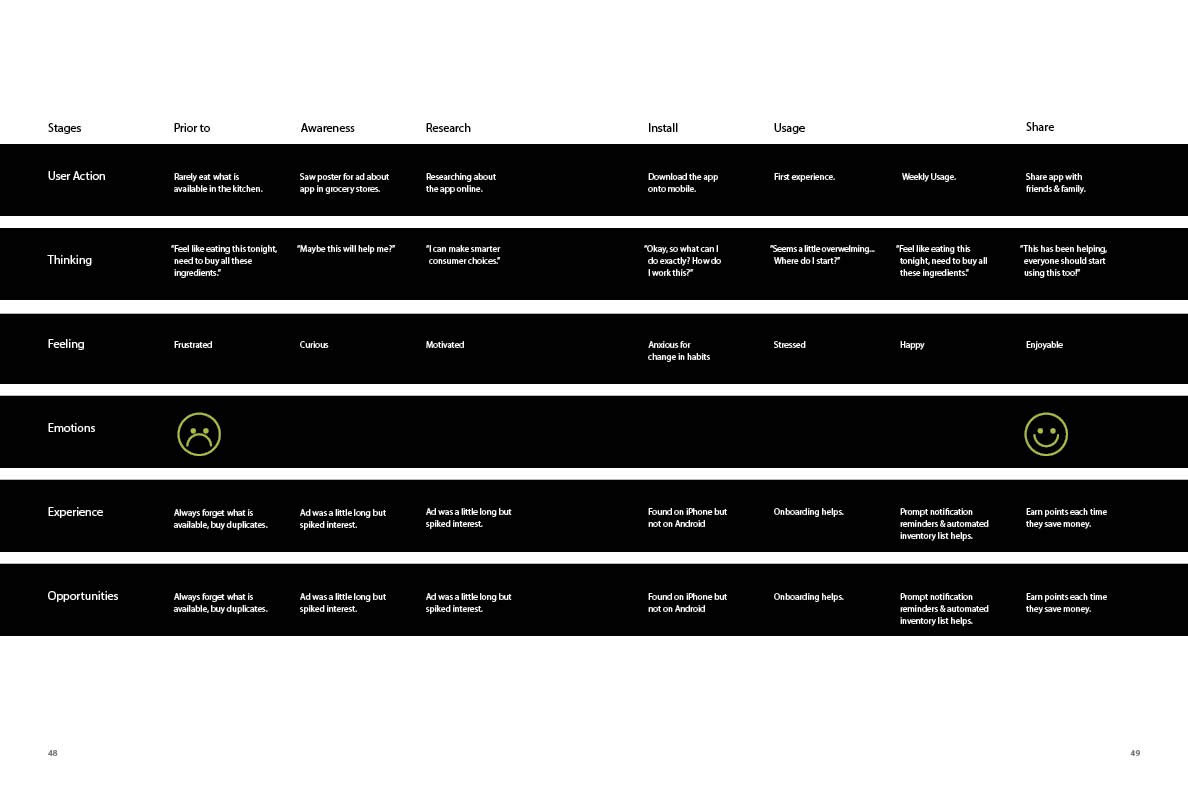
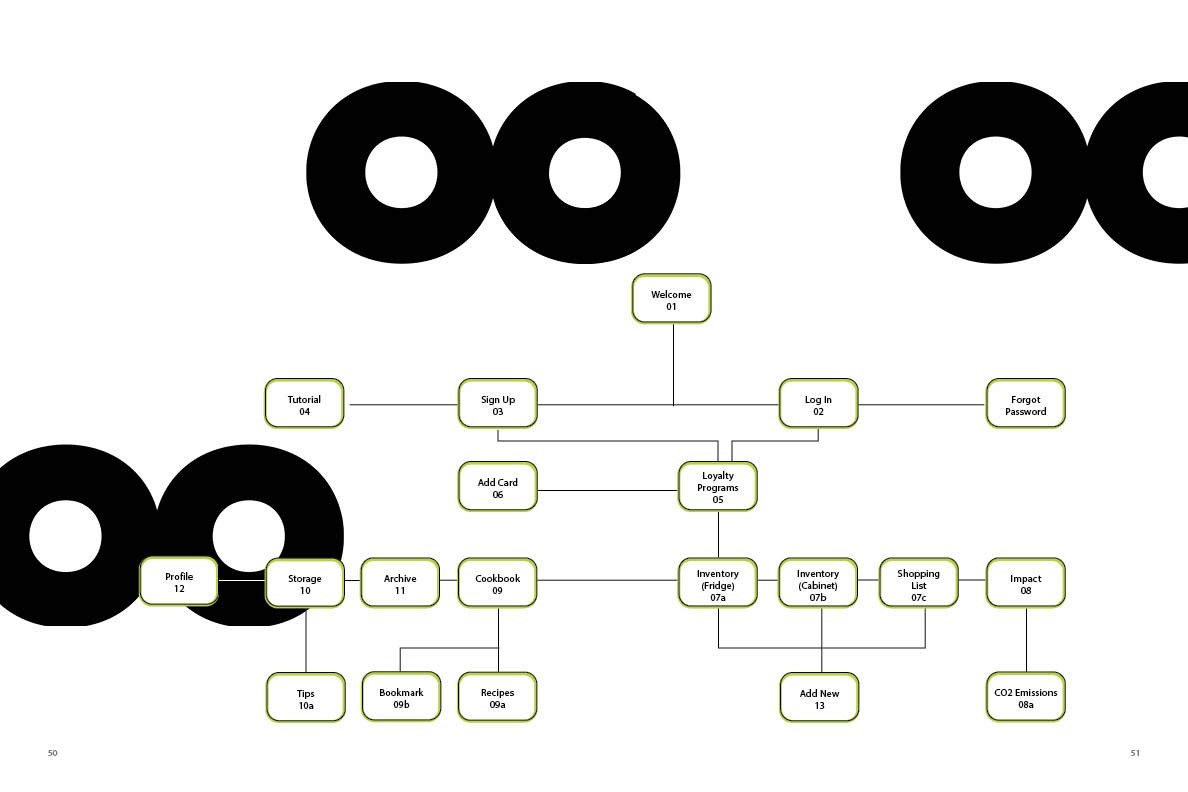
Research insights
We focused on two primarily users: The Convenient Consumer and The Successful Stakeholder.
Some of the target audience gains include: saving money, eating healthier, and reduce clutter and food waste. Many people tend to buy more than they intended to when they are shopping due to lack of planning.
By implementing technological solutions, we can alter consumers behaviour and help them reach their goals.
Pain Points
Bugetary Concerns
Everyone, regardless of generations, care about convenience & great values
Poor Planning
Unexpected purchases or deal to buy in bulk lead to overshopping & surplus of food
Meal Variety
Wanting to try new recipes so purchased ingredients for single use & never uses again
Lack of Food Knowledge
Leftovers in fridge + ambiguous presentation/language on packaging causes lack of confidence in food
Leftovers are boring
Meal prepping in large portions result in eating the same leftovers for days, causing frustrations
1
2
3
4
5
Research plan
We began by empathizing and understanding the pain points on why Canadians waste food, and what are companies currently doing to help reduce the issue commercially. One specific company that I looked into was Loblaws. Loblaws are helping to reduce the store-generated food waste by providing their customers with a convenient and environmentally sustainable way to purchase food (ex. No Name).
User research has shown that over the years there has been a change in people’s lifestyle, people want more comfortable and convenient lifestyle. Canadians care about health, but tend to over purchase due to lack of planning.
Key Insights: food waste is the result from interaction of multiple behaviours relating to consumer’s planning, shopping, storage, preparation, and consumption of food.
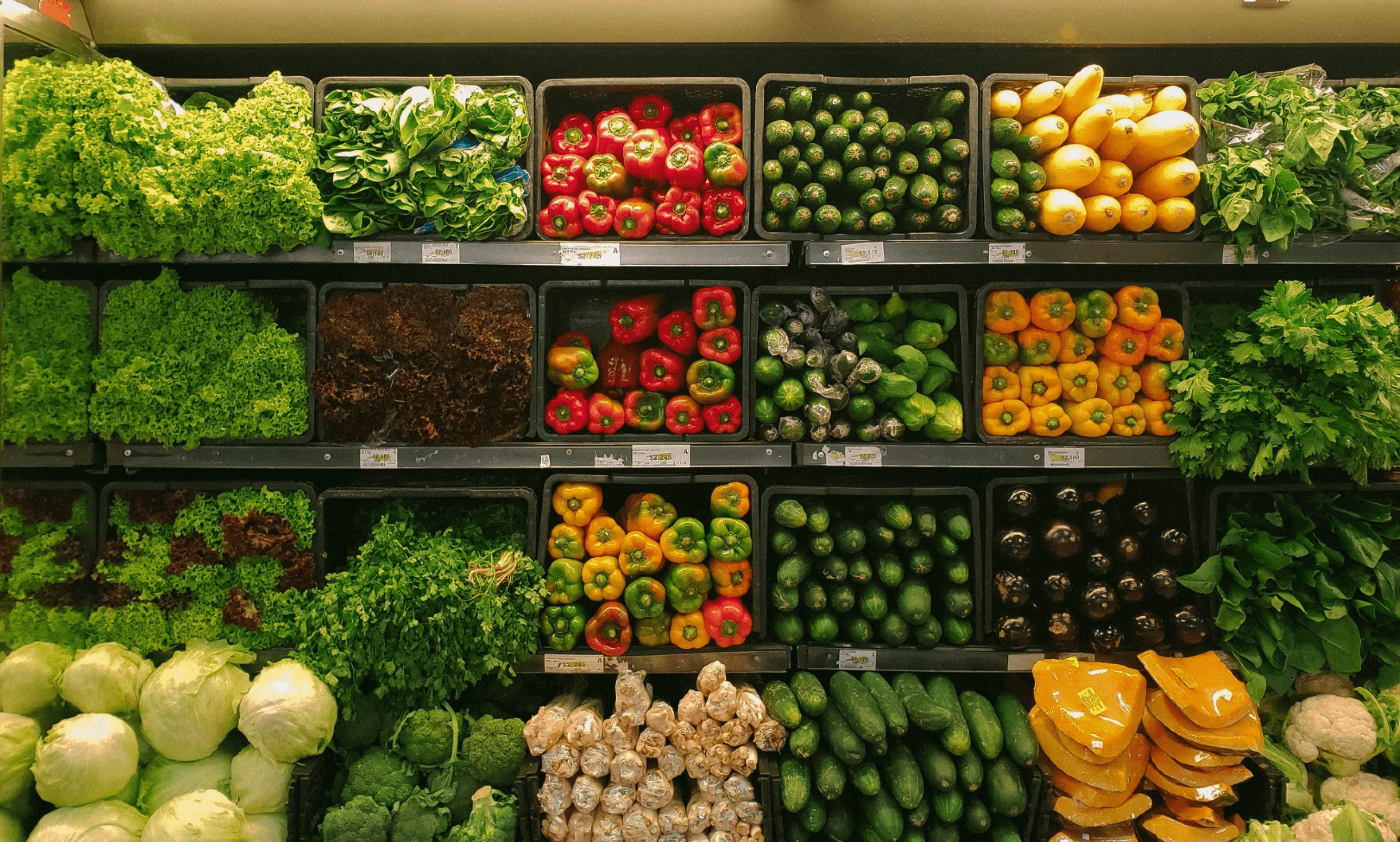
The problem and goal
Food waste is defined by the waste made up of raw
or cooked food materials at consumer and retail level. One-third of all food produced globally is wasted and majority could have been avoidable. Food waste has a negative effect on the economic, social, and environmental implications.
Canadians are one of the biggest food wasters, on average we throw out approximately $31 billion worth
of food/year. The largest contributors to waste is consumers. About half of this occurs at home. On average a medium sized family in Ontario throws out fruits and vegetables the most.
Our goal is to design an interactive app that could educate users and influence household food waste practices. Each time someone dispose of an item, the app could provide information on its impact to the environment on the screen. Users can also do quizzes to test their knowledge and learn tips to help improve their planning, shopping, storage, preparation, and consumer behaviour.
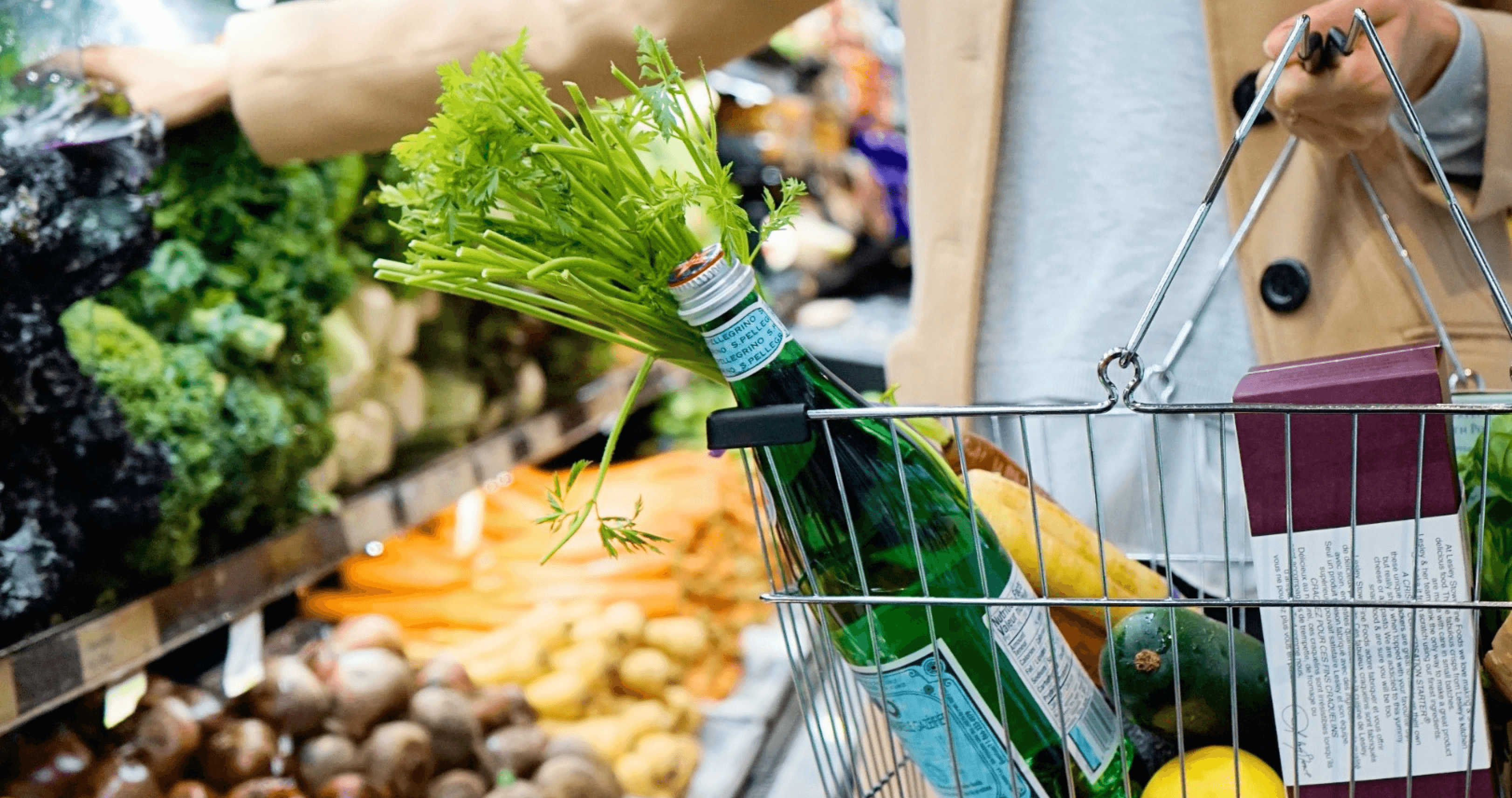
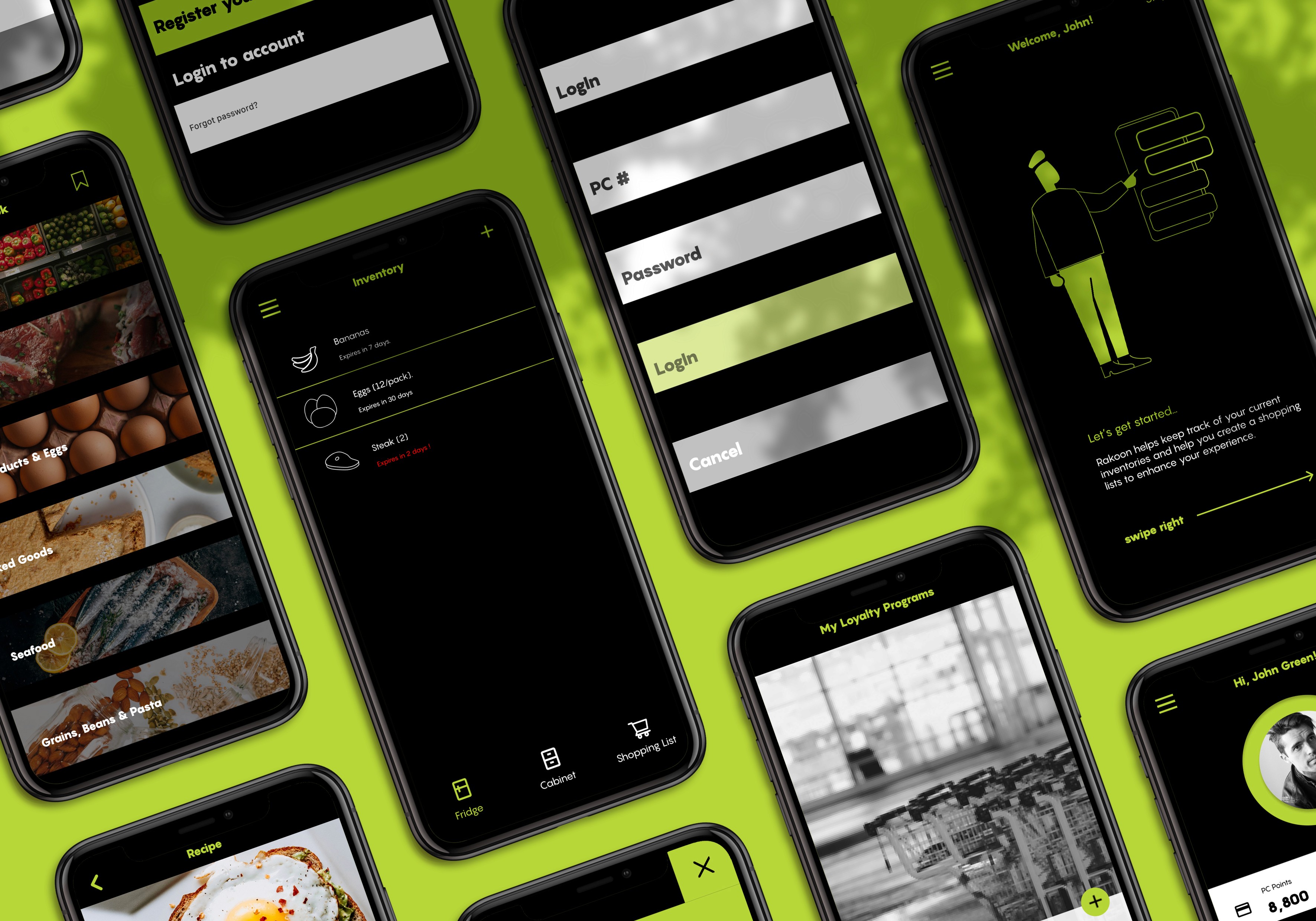
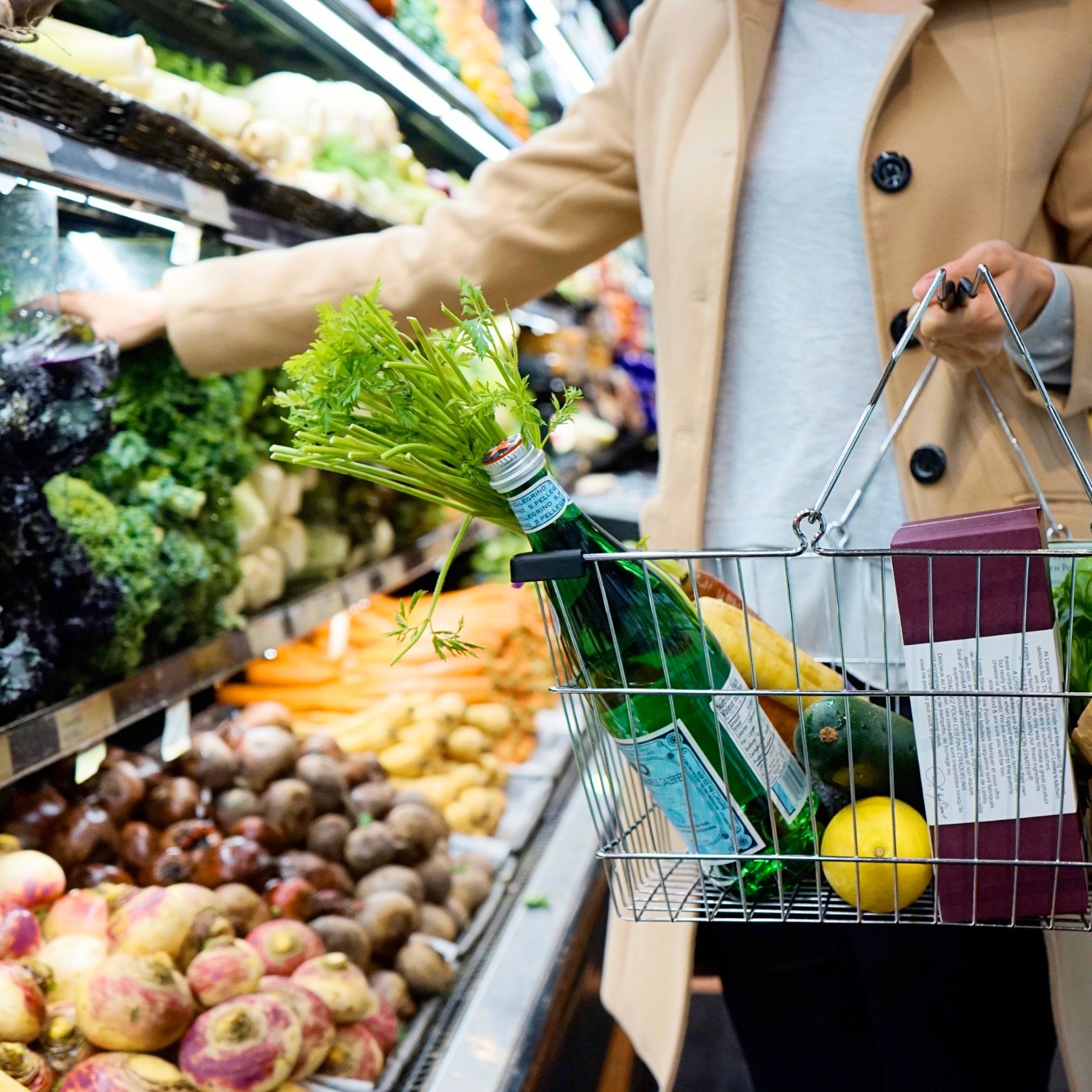
Overview

The modern solution to turn food waste into food treasure.
Rakoon is a food waste mobile platform that helps households have better food management habits by providing them methods to consume and declutter their kitchen before food goes to waste. The interactive application can help target audience succeed in their long-term goals by providing them with tips and reminders to improve and change their consumer behaviour within each stages (planning, shopping, storage, prepartion, and consumption). This helps them “feel good” as it helps households save money and learn new skills on the long run.
